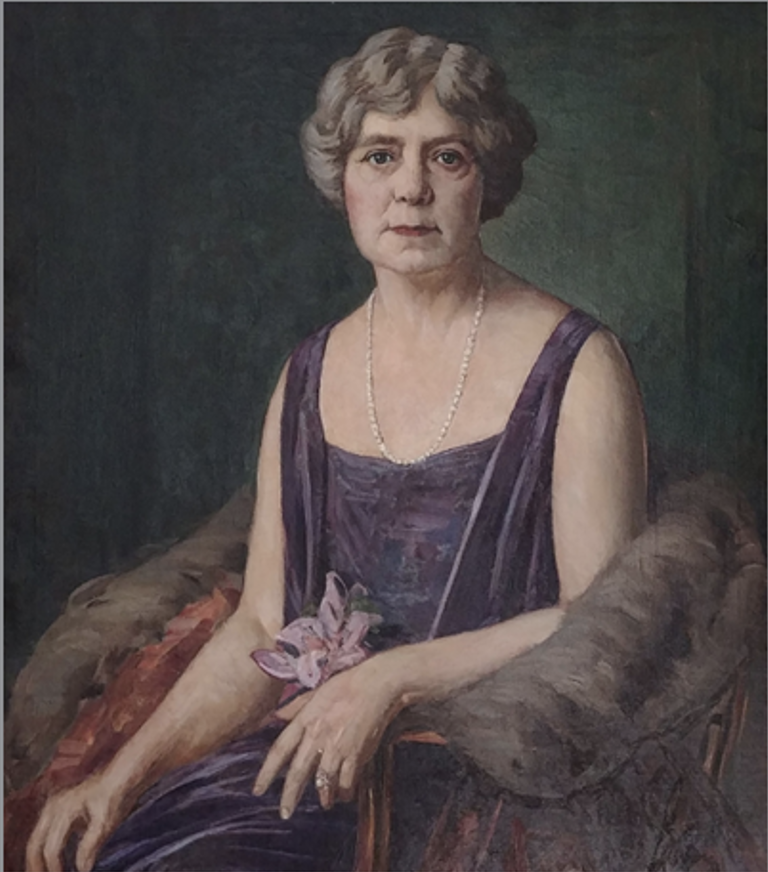
Annie Payne Howard,
Gold Star Mother
1859 – 1944
by Lauren Webb

James Buchanan Austin Jr. Used by permission, Utah Division of Archives and Records Service.
Jananne “Annie” Payne Howard’s [1] life changed when she lost her son, Captain James Austin Jr., on a battlefield in World War I. She joined thousands of other American women as a “Gold Star Mother,” a phrase used to refer to women who had lost sons in the war. Gold Star Mothers was also the name of a national organization that worked to support these women. The belief was that mothers should take equal ownership of their family members’ heroism and that gold-star motherhood was a “glorious crown.”
After the war, the Gold Star Mothers’ work extended to memorialization efforts. Many of the war memorials in Utah and around the United States are a result of women’s organizing. One of the most well-known war memorials in Utah, Memory Grove Park, was developed under the leadership of Annie Payne Howard. After visiting her son’s grave in France, she decided that Utah should have a place for memorializing the local men who had died overseas.

Memorial for soldiers fallen during WWI held at Memory Grove, 1920s. U of U Marriott Library Special Collections.
Mrs. E.O. Howard, as she was known in public, dedicated her life to Memory Grove. She collaborated with the Service Star Legion to be granted a patch of land in City Creek Canyon, where the women would plant a tree for every Utah man who had died in the war. She later became the treasurer of the War Mothers committee of the Service Star Legion and the chairperson of Memory Grove Park, actively lobbying for funding from both the government and the public.
After the Service Star Legion planted the first group of trees, they turned to the public for further funding for expanded beautification efforts. Annie sent out letters to men in Salt Lake asking for five dollar donations. She stated in the newspaper:

WWI pagoda memorial at Memory Grove. Utah Historical Society.
“You see, we gold star mothers do not have much money. We gave some teas and raised some, but that is nearly all gone now. Many of the mothers have laid a dollar in my hand and asked wistfully, ‘Will this buy a tree for my boy?’ Of course it wouldn’t, but I just had to say yes and trust to Providence to get the rest from another source.”[1]
Annie Payne Howard later stood in front of the Utah Senate and spoke in favor of the government granting an additional 10,000 dollars to the project. The decision would also place the city government in charge of the park, which would guarantee its continued existence.

Annie Howard’s photo from her 1920 passport application to travel to France and visit the grave of her son. Robert Lindsay via FamilySearch.
Between her son’s death and her own death in 1944, Howard’s project grew from a grove of trees to a public park with a beautiful pergola, memorial plaques, and walking trails that has been enjoyed by Utahns for a hundred years.
[1] Annie Payne Howard also used the last name Austin for time, the name of her late first husband.
[2] “Memory Grove Is Still Unfinished, Gold Star Mothers in Need of Funds, Salt Lake Men Are Asked to Assist,” Salt Lake Telegram, February 17, 1924, p. 2.

